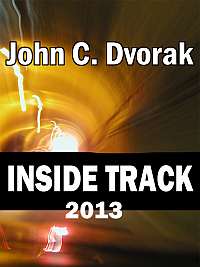
AudioReview – Picture Gallery – The most expensive speaker cable ever/ — Oh, brother.
Transparent OPUS MM – the new no-holds-barred flagship from Transparent Cable represent the latest advancements in networked cable only for the elite loudspeakers in the world. At $23,500 for an 8′ pair, clearly the most expensive cable ever produced. When comparing with the previous flagship, the Reference XL, one listener said: How much better could the Transparent Opus MM be than my much-loved Reference XL speaker cables. When I got them home and put them in my system they totally blew me away. I had them for 4 days and they made every recording better in a way I previously didn’t think possible. — from review
Yes, let’s ignore the laws of physics too.















The marketing guys at High End Audio manufacturers have been ignoring the laws of physics for decades with no apparent ill effects.
I’m glad I read this before I went shopping…
http://www.roger-russell.com/wire/wire.htm
The audiophiles are very prone to suggestion… You can sell’em anything if you can convince them it’s better… Pure Gold cables… Platinum conectors… Whatever, they’ll swear they can gear the difference… That’s because they’re smarter than we common folks…
I always thought Kimber Kable was supposed to be the best.
http://www.kimber.com/
Here’s a speaker company who eliminated the long analog cable altogether:
http://www.meridian-audio.com/m_bro_spk.htm
Since gold is a better conductor than copper, and doesn’t corrode, I’ll wager you could dip some gold necklace chains in rubber, screw the ends to your terminals, get equally good performance, and still have change left over from your 23 thou. Bling, bling.
Anyone who would buy this either has too much money to spend or is deffinatly touching themselves.
For quite some time, I’ve been of the opinion that it’s in the best interests of the audio industry to keep things analog as much as possible so that they can sell us expensive cables.
Pushing a digital signal through a cable means a much less expensive cable (Despite Monster Cable’s claims) because as long as you can send something that will be interpreted as a 1 or a 0, then you’re fine. Plain vanilla phone cord supports enough bandwidth to pass a DVD-A signal. Let the speakers themselves handle the decoding. Assign a channel for each speaker, run power to each speaker (they’ll have their own power amps), then run a cheap ethernet cable from the player to the first speaker and daisy chain them together. Each speaker decodes it’s own channel and outputs it. There will need to be some control protocols so that you can control the volume and stuff, but otherwise, it could be that simple. You could wire up your entire Home theater system end to end for less than $100 including running power to each speaker.